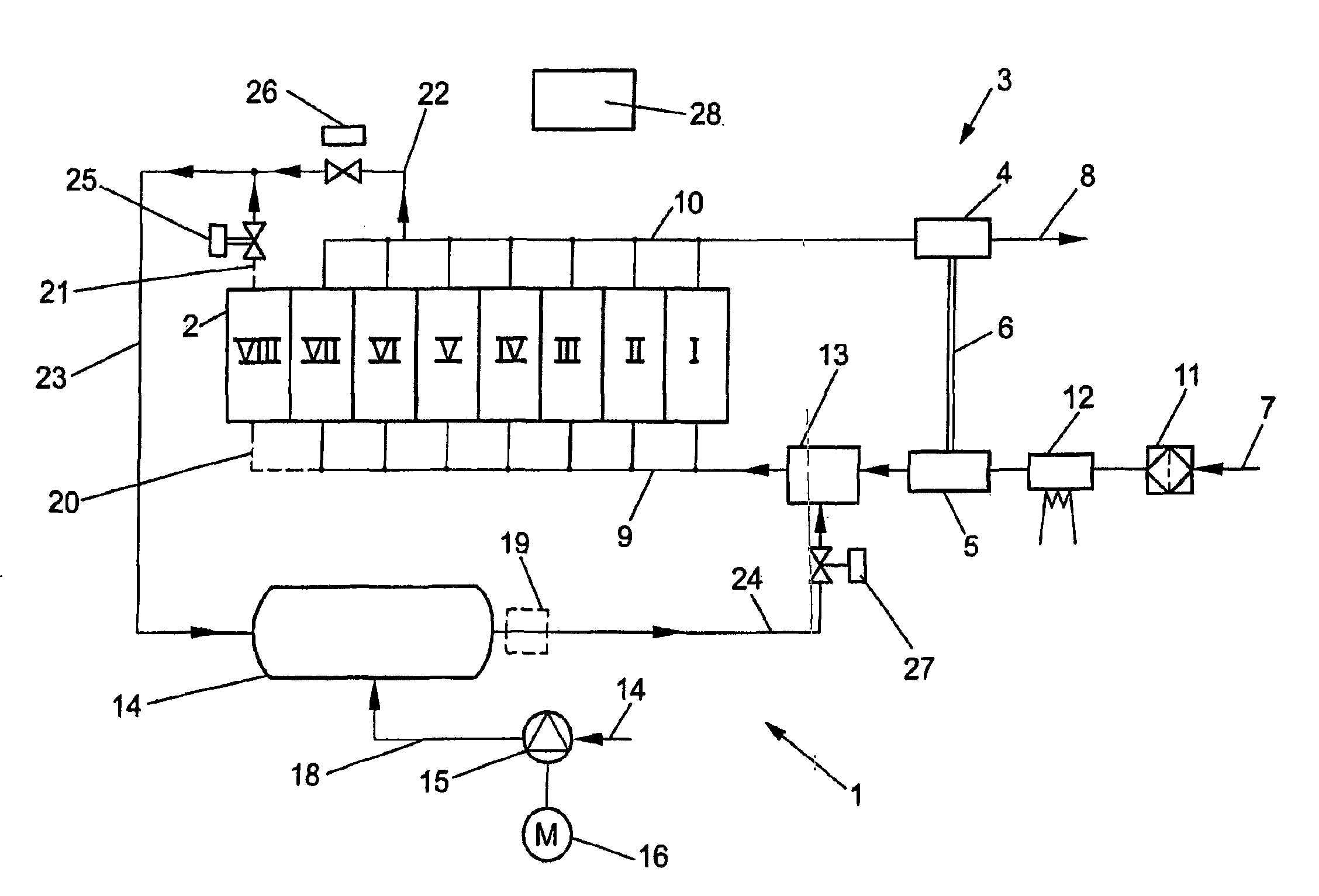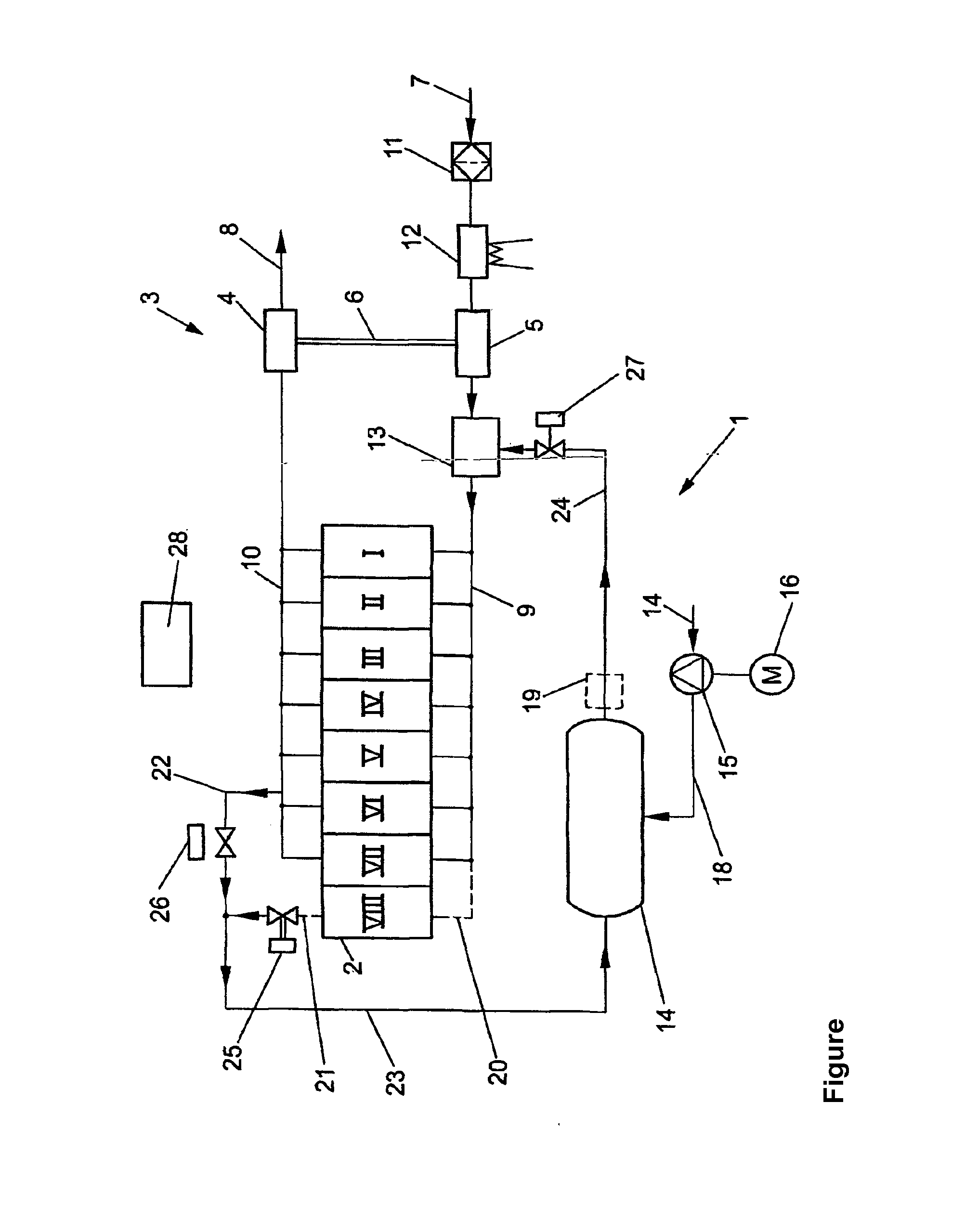Method and Device for Generating Compressed Air and for Blowing it into an Internal Combustion Engine
a technology of compressed air and internal combustion engine, which is applied in the direction of engine components, exhaust gas recirculation, non-fuel substance addition to fuel, etc., can solve the problems of no compressed fresh gas available, and the problem of blowing air in the case of vehicles without compressed air with them, so as to improve the circulation of exhaust gas
- Summary
- Abstract
- Description
- Claims
- Application Information
AI Technical Summary
Benefits of technology
Problems solved by technology
Method used
Image
Examples
Embodiment Construction
[0018]The FIGURE is a schematic illustration of an internal combustion engine 2 with an exhaust gas turbocharger 3 and an inventive device 1 for generating compressed air and blowing it in.
[0019]In the illustrated example, the internal combustion engine 2 is a diesel engine with eight cylinders I to VIII, an intake line 9 and an exhaust line 10. An air inlet 7 is connected via an air filter 11 to an intake air preheating means 12 which is connected to a compressor 5 of the exhaust gas turbocharger 3. This is adjoined by a gas feed device 13 which opens into the intake line 9. The compressor 5 of the exhaust gas turbocharger 3 is coupled to an exhaust gas turbine 4 of the exhaust gas turbocharger 3 via a coupling 6, for example a shaft. The exhaust gas turbine 4 is arranged in the exhaust line 10 upstream of an exhaust gas outlet 8 for the exhaust gas of the internal combustion engine 2, and is driven by an exhaust gas flow.
[0020]The gas feed device 13 has here a port with a blowing-...
PUM
 Login to View More
Login to View More Abstract
Description
Claims
Application Information
 Login to View More
Login to View More - R&D
- Intellectual Property
- Life Sciences
- Materials
- Tech Scout
- Unparalleled Data Quality
- Higher Quality Content
- 60% Fewer Hallucinations
Browse by: Latest US Patents, China's latest patents, Technical Efficacy Thesaurus, Application Domain, Technology Topic, Popular Technical Reports.
© 2025 PatSnap. All rights reserved.Legal|Privacy policy|Modern Slavery Act Transparency Statement|Sitemap|About US| Contact US: help@patsnap.com


